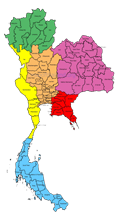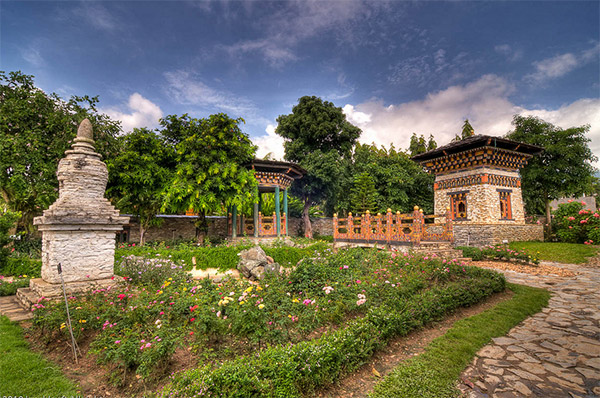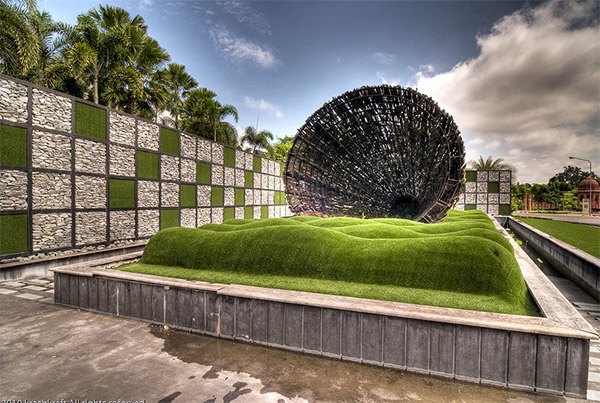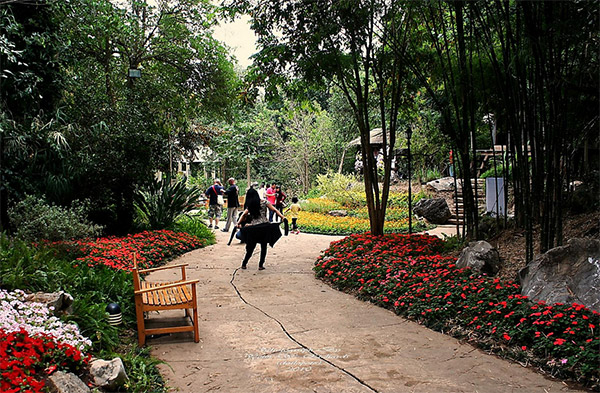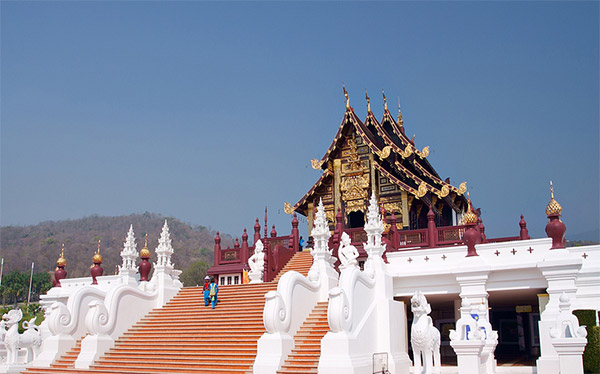Ratchaphruek Garden
Ratchaphruek Garden is situated 10km southwest of Chiang Mai, in Mae Hia sub-district. Nestled in a lush mountain landscape, this 400 rai (240,000m2) of land is indeed a picturesque setting -- not only the garden itself with its many plant and flower species -- but also its unique and delicate artwork and architecture which enriches the minds of its visitors with its seductive natural beauty.
The area was the site for the Royal Flora Expo 2006, the world most beautiful international horticultural exposition. This exhibition commemorated the auspicious occasion of the 60th anniversary of the crowning of His Majesty King Bhumibol Adulyadej. The Association of International Horticultural Producers (AIPH) gave the expo A1 status, its highest honor. Ratchaphruek Garden is truly the fruit of this special event. The garden has been carefully maintained and developed, and is a splendid resource for agrotourism, as well as being a learning and research centre for the public and a meeting-place for farmers to share knowledge.
Ratchaphruek Garden offers many attractions:
Ho Kham Royal Pavilion - This pavilion is the symbol of the garden. It features traditional architecture in the style of Lanna, Northern Thailand. The Pavilion has high ceilings and steep multi-tiered roofs, exquisitely guilded in ancient technique. Visitors will be amazed by the uplifting beauty of Lanna wisdom and craftmanship.
The insides showcase paintings of King Bhumibol many activities aimed at the improvement of life for all Thai people. These works are an innovative juxtaposition of modern and traditional styles. The artists employ subdued tones of grey, red and gold, imbuing their work with a strange, dreamy quality. These paintings feature backgrounds drawn from the stylized tradition of temple mural paintings, with crisp -- almost photographic -- forms superimposed over them, imbuing the paintings with a surreal, otherworldy quality.
The Pavilion also houses the gorgeous Tree of the Ten Kingly Virtues. It is comprised of layered orbs of gold Bhodi leaves, and symbolizes the fact that the King provides a garden of spiritual shade for his people.
Corporate Gardens - Presented by various organizations and state enterprises, the Corporate Gardens showcase sustainability and eco-friendly agricultural techniques. The philosophy of these Gardens is driven by His Majesty tremendous insight and ingenuity to improve his people well-being. The idea is to spread knowledge and provide a model which can inspire those who visit the Gardens to internalize His Majesty theories and to go on to learn and care for the world.
International Gardens - This is an area where visitors can enjoy unique and innovative landscaping as well as horticultural highlights from 33 countries around the world, such as Japan, India, Bhutan, and South Africa. Not only does the International Garden include plants, but each country beautifully showcases its particular identity through architecture and art. Indoor Exhibition - The indoor exhibit consists of hydroponics, a tissue culture nursery, as well as a dome for tropical plants and buildings for desert and temporate plants.
Outdoor Exhibition - The Outdoor Gardens includes water plants, a lotus garden, plants from each province in Thailand, plants which are believed to be auspicious, plants from Buddhist history, and plants painstakingly trained into incredibly beautiful shapes. There is also a building which exhibits information on the history of Thai horticulture. The enormous Outdoor Garden showcases the diversity of tropical horticulture. Rare Plants - Ratchaphruek Garden displays rare plants including the 'Royal Palm' and the 'Double Coconut', which stand at the garden entrance, and ancient pine trees which species dates from 250 million years ago.
'Royal Palm' - The smooth gray trunk, which is swollen at the base when it is young and at the middle when it is mature, sculpts the palm into a bottle shape. Its strikingly tall trunk can reach up to 20 metres in height, and its deep-green leaves make for an attractive tropical look. 'Double Coconut' or 'Coco de Mer' - A native of the Seychelle Islands in the Indian Ocean, this palm is mostly grown for ornamntal reasons - the fruits resembling a double coconut contain the largest seeds in the plant kingdom - they are up to 30cm in diameter, 45 cm in length and can weigh up to 14 kg. In years past, the nuts were believed to have aphrodesiac qualities, probably owing to their similarity in appearace to the female pelvis region. In the 1700, the fruits were sold in parts of Europe for a very high price. The tree was also once thought to be the Tree of Good and Evil in the biblical Garden of Eden.


